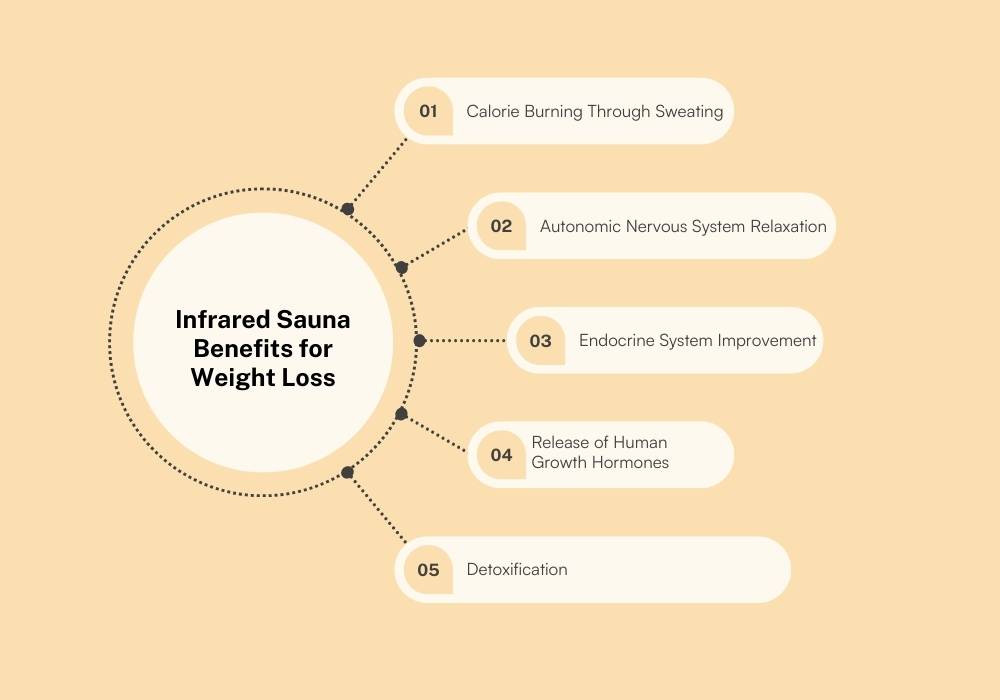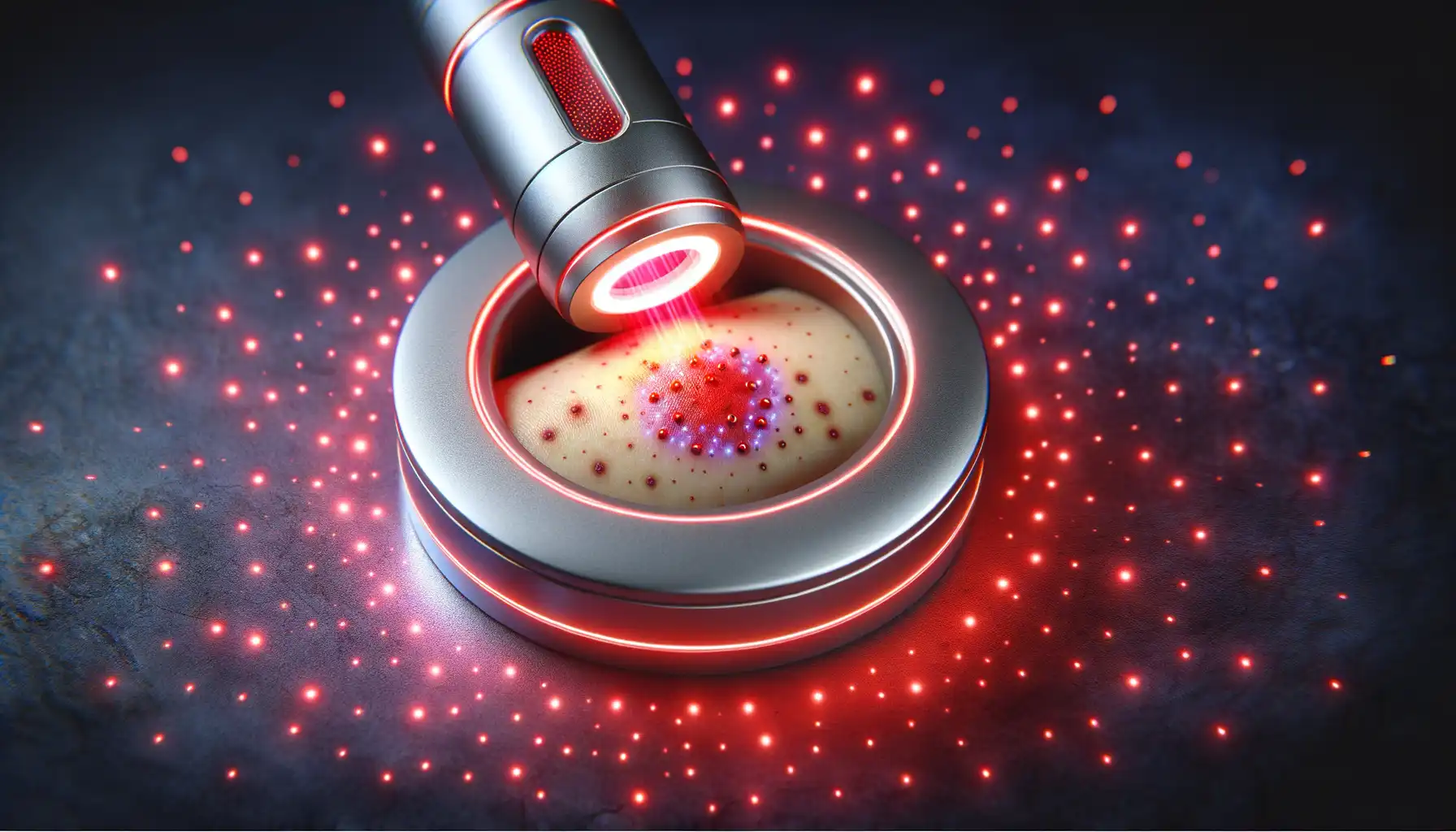Let's cut through the hype and talk about what's real. Using an infrared sauna can be a fantastic tool in your wellness arsenal, but it's not a magic bullet for fat loss. Think of it as a powerful supplement to a healthy diet and regular exercise, not a replacement for them.
In this guide, we'll break down the science behind how infrared saunas affect your body, what to realistically expect in terms of weight loss, and how to use one safely and effectively to support your goals.
The Science: How Infrared Saunas Affect Your Body
So, what’s happening when you’re sitting in that warm, red-glowing box? unlike a traditional sauna that heats the air around you, an infrared sauna uses infrared light to heat your body directly. This raises your core body temperature and triggers a few key physiological responses.
The Sweat Factor: Water Weight vs. Fat Loss
The most immediate effect you'll notice in an infrared sauna is sweat—and lots of it. It’s common to lose a few pounds during a single session. However, it's crucial to understand that this initial drop on the scale is almost entirely water weight.
Your body sweats to cool itself down, a process called thermoregulation. When your core temperature rises, your system works hard to bring it back to normal, and sweating is its primary cooling mechanism. While you might feel lighter afterward, this weight will return as soon as you rehydrate.
So, while sweating can help with temporary de-bloating, it is not the same as fat loss. True fat loss happens when your body burns more calories than it consumes over time.
The Caloric Burn: Does It Really Torch Calories?
Here’s where things get interesting. Your body has to work to produce all that sweat and keep your core temperature stable. This effort requires energy, which means you are burning calories. The process of sitting in a heated environment and elevating your heart rate is a form of passive cardiovascular conditioning.
How many calories are we talking about? Estimates vary widely, but most studies suggest a person can burn anywhere from 1.5 to 2 times their resting metabolic rate. For an average 150-pound person, this might translate to 100-200 calories in a 30-minute session. This is a nice little boost, but it's not equivalent to the caloric burn of an intense workout.
For perspective, a 30-minute brisk walk might burn a similar amount. The key takeaway is that an infrared sauna session does increase your caloric burn, just not dramatically.
Maximizing Benefits: Beyond Just Burning Calories
The real power of using an infrared sauna for weight loss lies in its secondary benefits. These effects can support your overall health and make your primary weight loss efforts—diet and exercise—more effective.
Boosting Your Workout Recovery
This is one of the biggest wins for anyone on a fitness journey. Sore muscles after a tough workout can derail your motivation and consistency. Infrared heat penetrates deep into your muscle tissue and joints, increasing blood flow and helping to flush out metabolic waste products like lactic acid.
Better recovery means:
Less muscle soreness and stiffness.
You can get back to your next workout sooner.
You can maintain a higher intensity in your fitness routine.
A study published in the journal SpringerPlus found that using far-infrared sauna therapy helped athletes recover more effectively from endurance training sessions. Using the sauna after a workout can be a game-changer for consistency.
Reducing Stress and Improving Sleep
High stress levels are a known roadblock to weight loss. When you’re stressed, your body produces cortisol, a hormone that can increase appetite (especially for junk food) and encourage fat storage, particularly around the abdomen.
Infrared sauna sessions are deeply relaxing. The gentle, therapeutic heat helps calm your nervous system and lower cortisol levels. Many people also report significantly better sleep after regular sauna use. Quality sleep is essential for hormone regulation, including the hormones that control hunger and satiety (ghrelin and leptin).
When you’re well-rested and less stressed, you're better equipped to make healthy food choices and stick to your fitness plan.
A Practical Protocol for Infrared Sauna Use
Ready to add infrared sauna sessions to your routine? Here’s a step-by-step guide to do it safely and effectively for weight loss support.
1. Hydrate, Hydrate, Hydrate
This is the most important rule. Since you’ll be losing a lot of fluid through sweat, you need to be well-hydrated before, during, and after your session.
Before: Drink 16-20 ounces of water in the hour leading up to your sauna.
During: Keep a large water bottle with you and sip throughout the session.
After: Rehydrate with another 16-20 ounces of water. Consider adding an electrolyte powder or a pinch of sea salt to your water to replenish the minerals lost through sweat.
2. Find the Right Temperature and Duration
infrared saunas operate at lower temperatures than traditional saunas, which makes them more tolerable for longer sessions.
Temperature: A good starting range is 120°F to 140°F. You don’t need to crank it to the maximum setting to get benefits. The goal is to raise your core body temperature, not to feel uncomfortably hot.
Duration: If you're new to it, start with 15-20 minute sessions. As your body adapts to the heat stress, you can gradually work your way up to 30-45 minutes. Listen to your body—if you feel dizzy or lightheaded, it's time to get out.
3. Timing is Everything: Sauna After a Workout
For maximum benefit, the best time to use an infrared sauna is after your workout. Your muscles are already warm and receptive to the therapeutic heat. This timing enhances recovery, reduces post-exercise soreness, and gives you a gentle cardiovascular cool-down. Using it before a workout can lead to dehydration and fatigue, potentially compromising your performance and increasing your risk of injury.
4. How Often Should You Use It?
Consistency is key. To see tangible benefits, aim for a regular schedule.
For general wellness: 2-3 sessions per week is a great goal.
For targeted weight loss support: 3-4 sessions per week can help maximize the benefits for recovery, stress reduction, and caloric burn.

Safety First: Is Infrared Sauna Safe for Everyone?
For most healthy adults, infrared saunas are very safe. However, the heat stress does put a demand on your cardiovascular system, so it’s not suitable for everyone.
Who Should Be Cautious or Avoid Saunas?
It's essential to consult with a healthcare professional before starting sauna use, especially if you have any of the following conditions:
Cardiovascular Issues: People with unstable angina, recent heart attack, or severe aortic stenosis should avoid saunas. The increased heart rate can put too much strain on the heart.
Pregnancy: The American College of Obstetricians and Gynecologists recommends pregnant women avoid activities that can cause significant core body temperature increases, including saunas.
Low Blood Pressure: Saunas can lower blood pressure further, potentially causing dizziness or fainting.
Kidney Disease: Impaired kidney function can affect your body's ability to handle fluid shifts.
Certain Medications: Some medications can impair your body's ability to sweat or cause you to become dehydrated more easily.
Always listen to your body. If you ever feel nauseous, dizzy, or unwell during a session, end it immediately.
The Final Verdict
So, can you lose weight with an infrared sauna? Yes, but not in the way most people think. The immediate weight you lose is water, but the true value comes from the powerful secondary benefits that support a healthy lifestyle.
By improving your workout recovery, reducing stress, enhancing sleep quality, and providing a modest caloric burn, an infrared sauna can be a fantastic partner on your weight loss journey. It helps you stay consistent with your diet and exercise, which is the real secret to sustainable fat loss.
Think of it as an investment in your overall wellness. When you feel better, you have more energy to exercise and make healthier choices. And that’s a recipe for success that goes far beyond the number on the scale.
If you have any underlying health conditions or concerns, please speak with your doctor before incorporating an infrared sauna into your routine. They can help you determine if it's a safe and appropriate choice for you.



